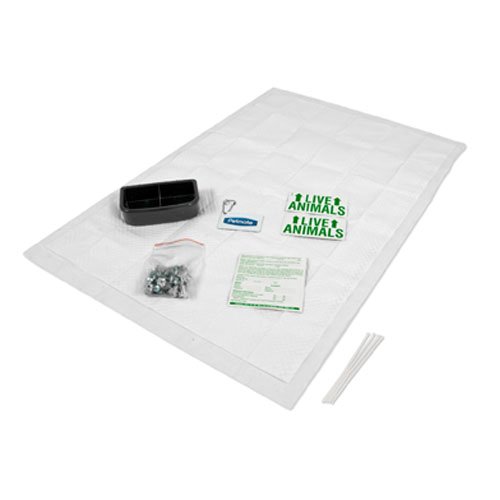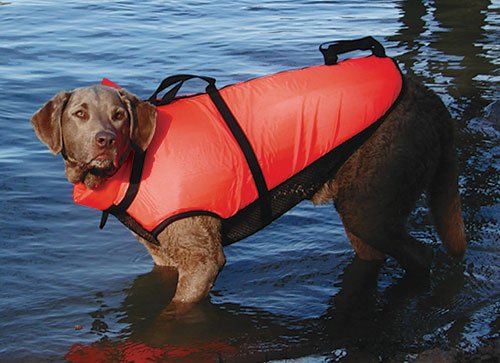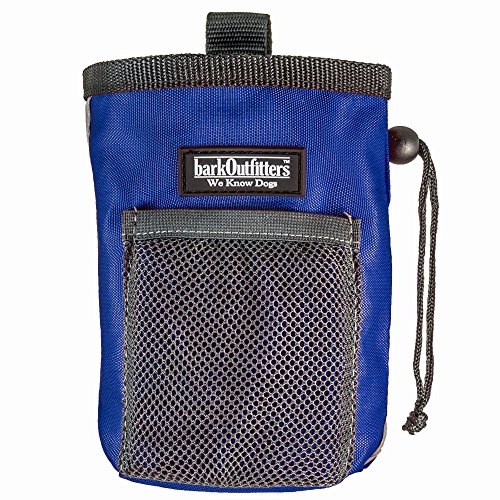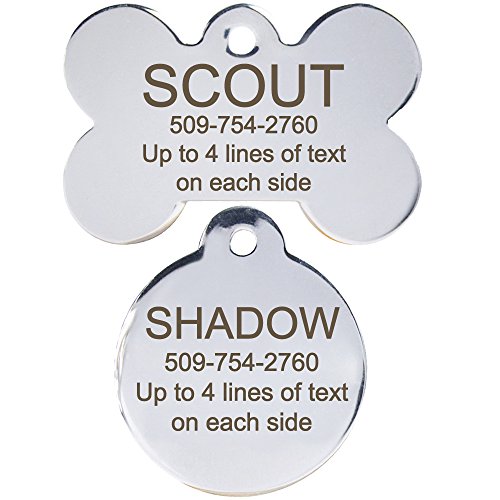There is more to the crate than meets the eye. It provides a safe haven for your puppy and frees up time for you to go about your daily chores without worrying for the security of your new pup. Those who are not aware of the usefulness of a crate will see it as a form of torture for dogs, however, if crate training is carried out properly, it can be a fun and rewarding for both you and your puppy. It's effectiveness cannot be denied, as shown by the number of professional dog trainers who swear by it when potty training.
Getting the Right Crate Size - An ideal dog training crate should be large enough to allow your dog to stretch out without hitting his head and allow him to be able to turn around easily. The size of the crate is consider too large if you find your dog relieving himself in one corner and playing and sleeping in another. You can block off and make the crate smaller by blocking off certain section with wooden cardboards if your pup is still young.
Critical Crate Training Rules - You must introduce the crate slowly to your dog when you begin crate training. Crate him in short intervals, about 10 minutes, and gradually increase the duration over time. All dogs need some time to get used to staying in the crate. Do not leave your dog in the crate for more than thirty minutes when you begin to crate train him.
It is not advisable to crate a young puppy for long periods of time. Your puppy should have the chance to exercise and urinate before being crated. Dogs are clean creatures and do not wish to dirty the space near their personal sleeping areas. However, he might be forced to relieve himself if you cruelly lock him in for longer than he can hold it in.
A good way to remember the maximum length of time a puppy should be crate is to add 1 hour to his age in months. For example, a 2 month old puppy should not be crated for more than 3 hours without any bathroom breaks.
It's common for pups to bark and moan to attract your attention while in the crate. If any of these things happen when he is in the crate, do not give him any attention! Yes! Do not even look in his direction.
Dogs are intelligent animals. Do not let on that he will be able to get your attention and change your mind when he is upset. Simply ignore him. Praise your dog or let him out only when he settles down.
If it's a young puppy whom you've just introduce the crate to, maybe you can offer him a treat in the crate to calm him down. Whatever you do, don't let him out of the crate at that very moment.
If you notice that your dog displays hyper active behavior as compared to before, you might be crating him for too long. If your dog starts to chew on himself, let him out immediately and consult a trainer or behaviorist.
Here are some tips to help introduce the crate to your dog:
1. To make his experience pleasurable, play with him there or spend time watching TV there or reading as he gets busy with chewing a toy. If he is there all by himself, he begins to associate the area with isolation and may resist being there at all.
2. Begin crate training at dinnertime. Give him his food, one piece at a time, by throwing bits of kibble in to the crate and making him search for it. This is one way of making it fun during his training.
3. If you pick up his toys, place them in the crate, so that when he returns he can play with them. To surprise him, you can even hide a biscuit in the crate - that's fun!
4. It is not advisable to keep him in the crate for long periods until he is pressured to relieve himself. If you are gone for long periods each day, you should consider a larger confinement area such as an exercise pen or a small room.
5. The best place to place the crate would be where your puppy can see the environment and family members, hear and smell you, the owner.
6. Never use a crate to punish your dog, it will backfire. Your pup will tend to enjoy his stay in the crate more readily if you can make him associate crate stay with a time for fun. The crate is suppose to be your dog's natural den where he feels safe and comfortable, not where he'll be punish and associate it with "bad things".
7. Crate training cannot be used as a permanent solution to ensuring your dog is kept safe without supervision. Puppies should not be left alone for extended periods in their crates. Your training duration will be affected greatly if you crate him for too long and he urinate in the crate.
To conclude, crate training is a very valuable and useful obedience training lesson. Its main purpose is to provide security, safety, reduce potentially destructive behaviors, add to the ease of traveling and protection for short term confinement, whenever the owner needs it. It is one important lesson all puppies should learn from day one.

 Traveling Safely with your Pet
Since this is the season tha
Traveling Safely with your Pet
Since this is the season tha
 Fido Float Dog Life Jacket Size Medium
As family members, our dogs
Fido Float Dog Life Jacket Size Medium
As family members, our dogs
 Through A Dogs Ear: Sound Therapy For You And Your Dog
Todays Hectic LifestyleIn th
Through A Dogs Ear: Sound Therapy For You And Your Dog
Todays Hectic LifestyleIn th
 Small Dog Cross Breed As A Pet
Our dog, Mika , is quite a mix of breeds.
Small Dog Cross Breed As A Pet
Our dog, Mika , is quite a mix of breeds.
 How to Find My Runaway Dog
If you are a dog owner, you
How to Find My Runaway Dog
If you are a dog owner, you